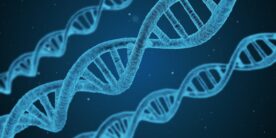

insights
A Rare Opportunity
I attended the NORD 2019 Summit in Washington, DC a few weeks ago. It was my first chance to attend this conference organized by the National Organization for Rare Diseases and, admittedly, the first time I considered going. I had the impression that NORD was a policy and advocacy meeting (it was) with limited discussions on technical and scientific topics in rare disease drug development (also true). However, while I was correct about the content of the Summit, I erred by focusing on the content and not considering the message — The Time is Now.
This message was conveyed in the passionate presentations from Terry Jo Bichell, Ph.D., Founder and President of COMBINEDBrain and Karen Pignet-Aiach, Founder and CEO of Lysogene on Angelman Syndrome and Mucopolysaccharidosis IIIA (MPS IIIA) disease, respectively. Dr. Bichell, whose son was diagnosed with Angelman Syndrome, spoke of her personal quest to understand and treat the disorder by obtaining a neuroscience doctorate at the age of 50. Today, she leads a consortium dedicated to researching and developing treatments for rare, non-verbal brain syndromes. Ms. Pignet-Aiach, whose daughter has MPS IIIA, eloquently detailed the challenges of venturing into the world of biotechnology to build an AAV gene therapy company that is leading a therapeutic revolution addressing monogenic rare diseases. Most importantly, Dr. Bichell and Ms. Pigent-Aiach connected their successes back to the realities their children (and others) face in daily life, emphasizing the urgency of their causes in a way that only mothers are capable of doing.
Following this “call to action,” a panel of industry and advocacy leaders discussed the challenges to rare disease drug development, costs, and implications for market access. Speaking on behalf of bluebird bio was Nick Leschly, chief executive officer. bluebird has developed an ex-vivo gene therapy that corrects the causal genetic mutation and alters the disease phenotype in transfusion-dependent beta-thalassemia, and is currently developing a similar treatment for sickle cell disease. These gene therapy methodologies are as close to a “cure” as any biomedical research has accomplished to date for genetic diseases, but they are difficult to manufacture and develop, leading to high costs. Mr. Leschly noted Bluebird’s commitment to value-based pricing for these expensive therapies, where cost is just one of the many technical, regulatory and healthcare-system hurdles to clear for development and commercialization. The reality of these difficulties was re-emphasized at a gene therapy breakout session by Mark Rothera (Chief Executive Officer of Orchard Therapeutics), whose company is developing a similar gene therapy platform for very rare immunodeficiencies such as Wiskott-Aldrich Syndrome, and Olivier Danos, Ph.D., Chief Scientific Officer of REGENXBIO), where AAV gene therapy approaches are being researched for neurodegenerative disorders such as Batten Disease. The ultimate challenge of rare disease research and development was described by Amy Price, a patient advocate for metachromatic leukodystrophy and the mother of one of the first children ever treated in a gene therapy trial for the disease. Mrs. Price detailed the significant obstacles parents and patients face in participating in international clinical trials for ultra-orphan diseases.
The intersection of patient advocacy, parental urgency, breakthrough biomedical research and industrial demands was best represented in the keynote addresses from former and current leaders of the FDA and Department of HHS: Dr. Scott Gottlieb, Dr. Ned Sharpless, and Alex Azar. Of note, Drs. Gottlieb and Sharpless both heralded the Agency’s recent approval of an AAV gene therapy for spinal muscular atrophy, while Dr. Gottlieb added a definitive request to focus on broad market access for expensive, disease-modifying treatments such as gene therapies. Dr. Sharpless keyed in on the Agency’s productivity in orphan drug approvals, including a record number of new orphan treatments approved in 2018. More specifically, Dr. Sharpless mentioned that major elements of FDA regulatory authority including Fast Track, Breakthrough, and Orphan Drug designations, along with Priority Review, led to the approval of Vertex’s triplet therapy for cystic fibrosis approximately five months faster than a standard approval (much to the delight of the crowd on hand). However, Dr. Sharpless also noted the long road ahead for orphan drug development in that, of the approximately 7,000 diagnoses classified as rare diseases, very few have approved treatments or potential therapies under development. Dr. Sharpless mentioned the Agency’s efforts to spur on new drug development for these unmet needs. Of interest to the Agency was a new focus on natural history studies and datasets that may allow for historical controls to augment the standard placebo-control trials. This initiative may lead to faster clinical trials and/or more clinical research for rare diseases, particularly those considered ultra-rare. Finally, Mr. Azar capped off the keynotes with an overview of the administration’s healthcare policy stances, particularly emphasizing the administration’s commitment to rare diseases and a healthcare system that works for everyone.
I was fortunate enough to receive the message of NORD 2019 at an individual level as well. I had the opportunity to meet and speak with John Boyle, President and CEO of the Immune Deficiency Foundation, to discuss the purpose of his foundation, where the current needs are in treatment and diagnosis and the role the industry has in advocating for these conditions (disclosure: I have a specific research interest in rare primary immunodeficiencies, which I think are underdiagnosed and represent a significant unmet medical need.) I had the chance to introduce myself to the founders of the Myhre Syndrome and CHAMP1 foundations, which were started by two fathers of children diagnosed with these ultra-rare diseases who are leading the respective efforts to educate and initiate research on the diseases. I also had the pleasure of speaking with Hilary Rosselot, Director of Research Facilitation for the National Fragile X Foundation, about her journey from the clinic to advocacy for Fragile X syndrome. There were many other conversations and networking moments with patient advocates and drug developers, all of whom were uniquely focused on the common spirit that is symbolized by the NORD Summit.
It is quite humbling to be in the presence of individuals whose lives are so dramatically impacted by a rare disease. The parents, advocates, patients – particularly the children – and caregivers all supported each other in a way that is difficult to describe. Given that I have no personal experience of my own with one of these conditions, there are times where it can be challenging not to feel a bit unworthy working in this area of research. I am consistently reminded of my first moment in such circumstances, when I attended a fundraiser for the debra organization years ago, and the incredible perseverance of their community on display that night. Fast forwarding from that moment to today: the most severe forms of epidermolysis bullosa may have a treatment in the form of genetically modified skin transplants. Advances such as these bring a purpose to the work that I do, and ultimately make me feel – at least partially – like a member of the rare disease family.
In the end, I leave the NORD 2019 Summit and move into the following days and weeks decidedly not in the same manner that I entered: understanding that The Time Is Now. The message was delivered loud and clear.
Note: Please check out the NORD website here to see a complete list of the foundations and advocacy groups represented by the organization. You never know who you might be able to help.




